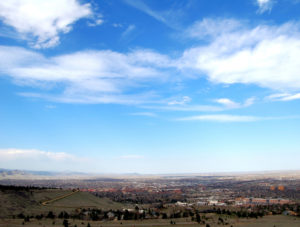
Fear of Open Spaces or Agoraphobia in Oxford, Abingdon and Bampton
Agoraphobia is a non-specific phobia which can develop either through trauma or slowly building over time. Often the person is avoiding going outside, or only moving in a limited area. Often the person with agoraphobia is of an anxious disposition generally. This is why the standard use of the fast phobia cure does not work with this condition.
Building confidence
Instead, it’s about building confidence and lowering general anxiety that enables the person to become used to being out of doors, or on public transport. Often larger incentives are needed, and sometimes it can be used as an excuse not to go to school or work (secondary gain), or it can be the result of a fall or trauma.
In the UK, around 1% of the population will experience agoraphobia at some point in their life, and it is twice as common in women as men usually starting between the ages of 18 and 35.
Solution-focused therapy to help Agoraphobia
Solution-focused therapy can help a person stay focused on what they want to achieve. Whether it’s just being able to go down the shops, or whether it’s being more independent. Being able to travel further afield, a solution-focused approach helps the person keep their eye on the goal.
CBT to help Agoraphobia
CBT helps a person realise the thoughts they are experiencing about open spaces are irrational and unhelpful. Someone with a fear of open spaces may feel threatened by strangers. Helping the person understand the thoughts and that they can take control of the thought process, can help them to develop strategies and create experiments to help.
Mindfulness to help Agoraphobia
Mindfulness can be a very effective tool to help manage the feeling of panic when out in the open. Often breathing techniques and counting steps can be effective for staying calm.
Hypnotherapy to help Agoraphobia
Hypnotherapy is a very effective way to reduce general anxiety that lies at the heart of agoraphobia. It helps the person to regain composure and reframe the problem. Using visualisation skills, a person can train their brain to be able to walk certain routes for example.
Mick is in his 30’s and suffered severe trauma to the head after being attacked in his mid 20’s. He was still suffering PTSD and had learning difficulties and a personality disorder. When he approached me to work I agreed. But because of the nature of the brain damage, I could not guarantee success and really could not give him an estimate about how long he’d take.
The work consisted of relaxation and visualisation. His learning difficulties and personality disorders meant it was not possible to work in the standard way. I spent the first few months just getting to know him and find out what his needs were and passions.
The most prominent passion was animals and a few weeks after seeing me he took up riding. Over a period of 9 months, we worked each week towards a goal of getting him on a train or bus. The first success was when the weather turned and he had to take a bus to the stables. It was the first time he’d achieved this since the trauma.
Creating purpose
It became evident that we needed purpose behind his travel. Just going for a jolly ride into the Cotswolds was not his idea of fun. By the 9th month, we established he should go and stay with his brother who lived about 60 miles away. He achieved this and was OK with it. His brother had picked him up and dropped him off at the station. We realised one problem was his reading. He was very slow and he wasn’t able to make fast decisions.
I also discovered he needed to widen his circle of people he knew. Mick found it difficult to find out information, so with my help, I helped him track down a number of societies. They met regularly to discuss a variety of subjects that interested him.
After 18 months I introduced him to a riding stable for the disabled. Here he volunteered to clear out the stables and handling the horses. This was ideal as he had to make regular bus rides to the stables.
His real goal
His real goal was to be able to go anywhere. Therefore after working together for just over 2 years he joined the YHA and went on a weekend away. First to the West Country and then went on a week’s holiday.
Initially, Mick also came to me with fear of the dark as well. One way we changed that was I turned off the lights in the clinic to get him to relax in total darkness and it worked. After a while, he wouldn’t go into trance until it was totally dark.
Over the next 2 years, he came occasionally for a top up, and to help him through a number of stressful situations, but also on achieving an ambition to travel abroad.
For research on the use of hypnotherapy for agoraphobia, read this research paper.
Also, see A-Z of phobias
